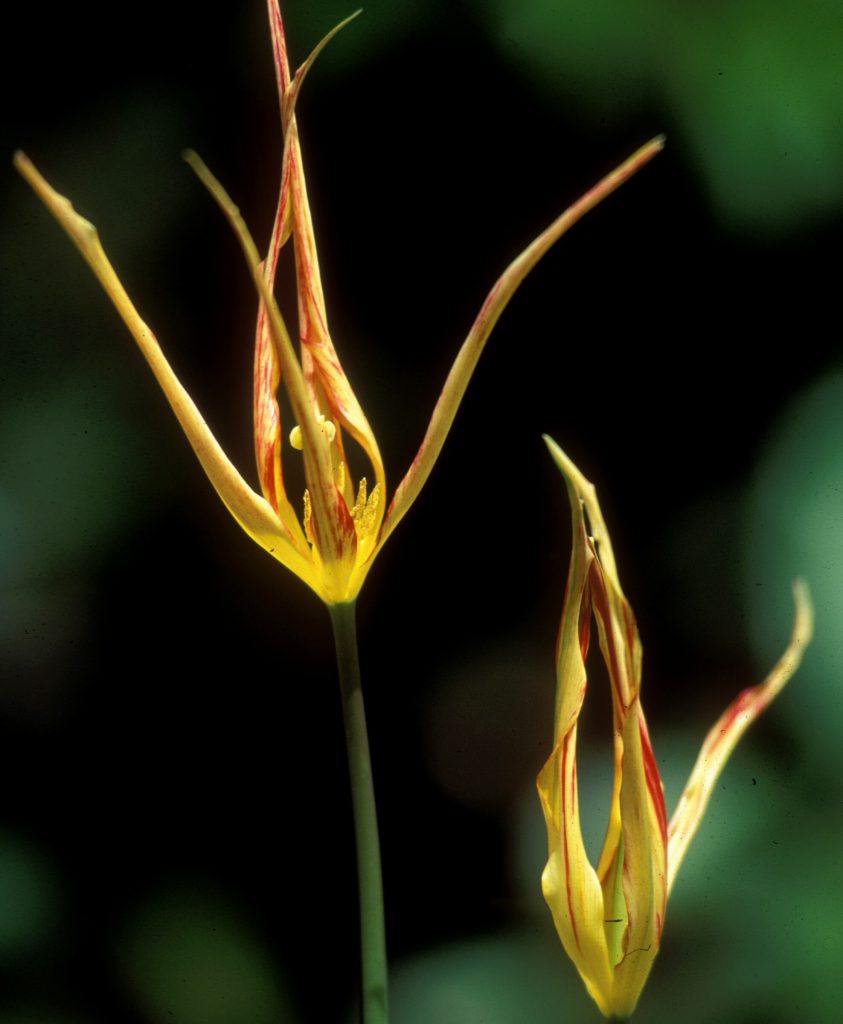At the mere mention of tulips, many immediately conjure up images of Dutch bulb fields awash with a rash of intense, brilliant colour.
This popular and easy bulb brings a splash of spring colour to the spring garden, and is equally at home in both a formal garden setting and a cottage garden. For the tulip enthusiast the genus offers far more than familiar favourites such as ‘Apeldoorn’ or ‘Queen of Night.’
The Garden holds the National Collection of species tulips, which have given rise to the hybrids and cultivars popular today. The collection has its origins in the 1920’s when William Rickatson Dykes, Secretary of the Royal Horticultural Society, determined to understand more about the origins of the garden tulip and the diversity of the genus. Over subsequent years his collection grew, and was gifted to the Botanic Garden in 1948.
Today the collection comprises species which naturally occur in a range extending from western Europe to eastern Asia, and numbers approximately 80 in total. Given their natural distribution, it is no coincidence that their cultivation increased in the Ottoman Empire, and this in turn gave rise to the phenomenon of Tulipmania in the 1630’s. The collection is diverse in colour, form and flowering time. The season begins with the diminutive, white Tulipa cretica, which starts the show in February. Flowering is rounded off in May or June by the tall, elegant scarlet Tulipa sprengeri.
Upon flowering, each pot of bulbs is displayed in our Alpine House and the collection provides a succession of interest from February through to May. Though incomparable with the vast acres of tulips in Holland, our small collection is invaluable in demonstrating the natural diversity of this genus, and the origin of one of our most familiar garden plants.
Publication Date 16/03/2016









